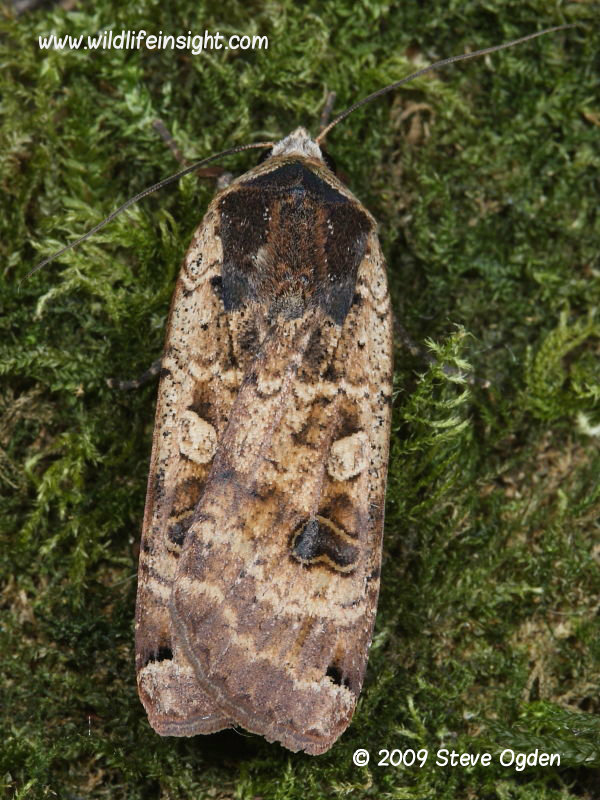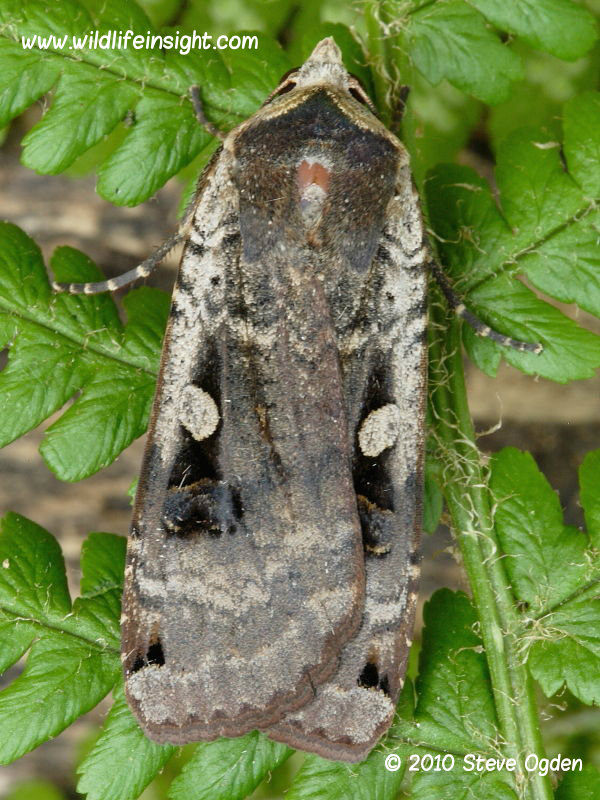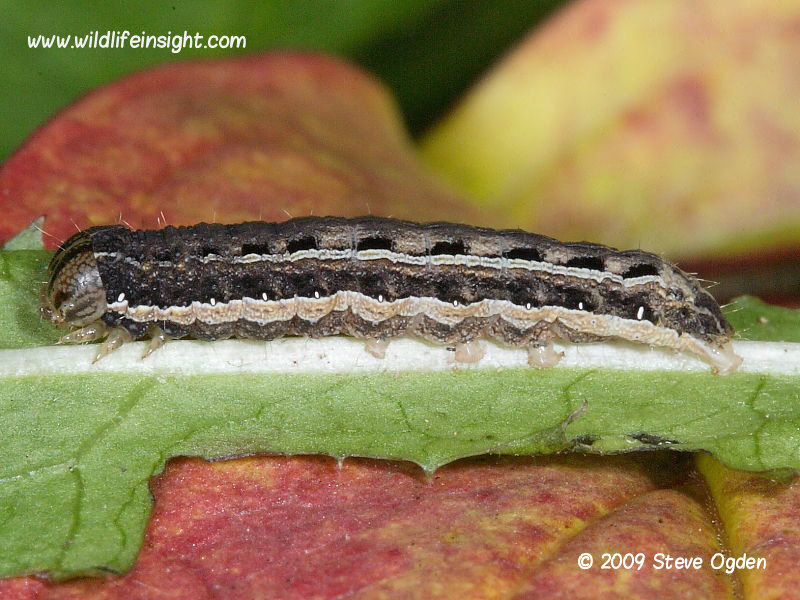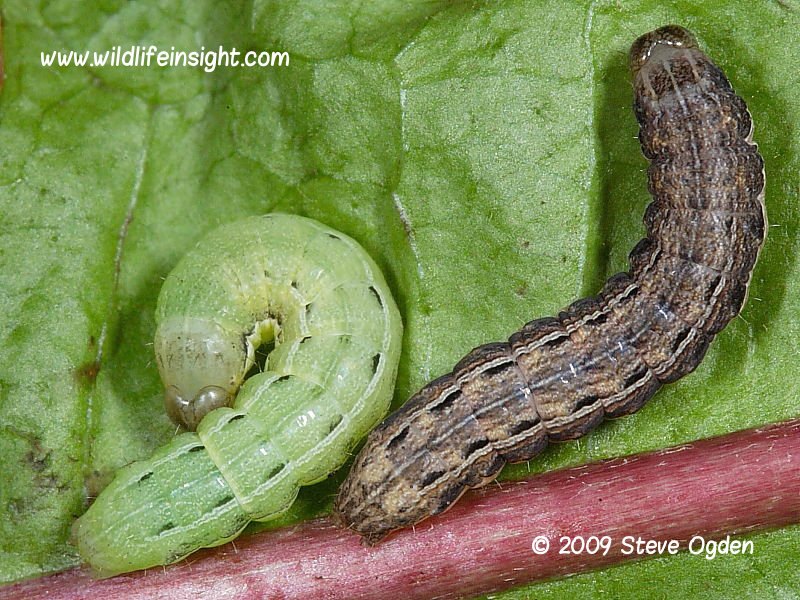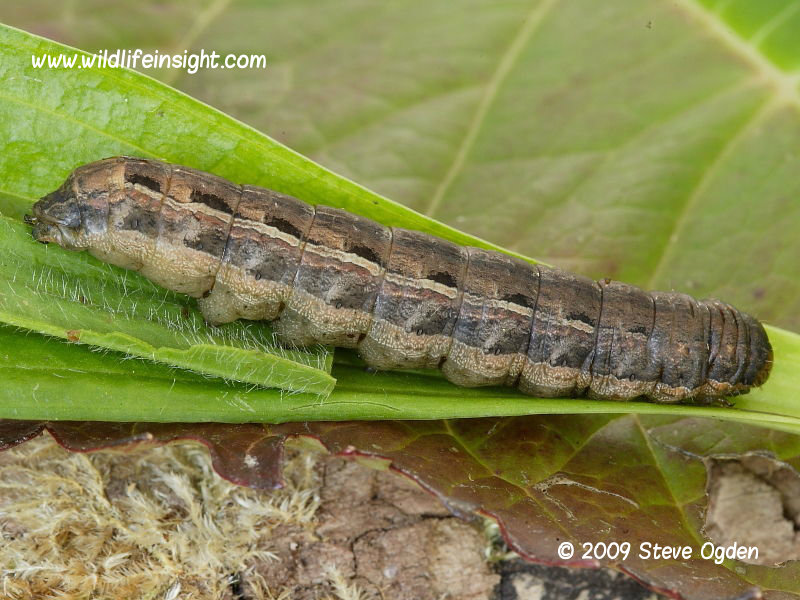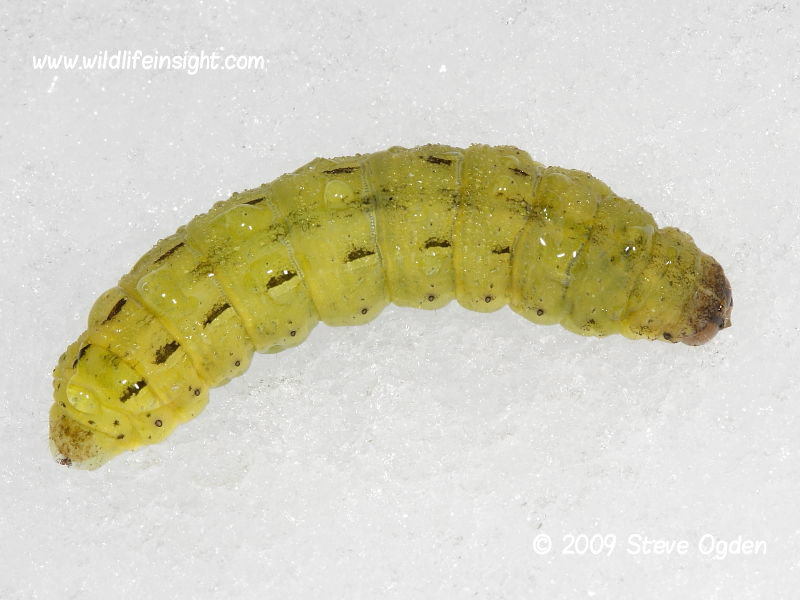Large Yellow Underwing moth and cutworm caterpillar, Noctua pronuba
The Large Yellow Underwing is one of the most common moths to be found throughout much of the British Isles and Europe.
In North America its range in recent years has extended as far north as Canada and Alaska.
In many American States they are one of several moth species with larvae referred to as cutworms due to the damage they cause to garden plants and agricultural crops.
In most of its range the Large Yellow Underwing moth flies in a single generation at night between July and September when it can be attracted to light in large numbers both in gardens and open countryside. Numbers may also be swollen by the arrival of migrants from continental Europe.
Identification of the Large Yellow Underwing Moth
The Large Yellow Underwing moth derives its name from the its yellow hindwings and has a forewing length of c 25mm.
The forewings are variable shades of brown with some exceptionally dark forms.
The pale, upper oval and outline of the lower kidney mark is normally evident even on the darkest specimens.
The hind wings are a yellowy/orange with a bold, black sub terminal band.
The hindwings are covered when at rest but when disturbed or revealed in flight they appear strikingly colourful.
Other common Yellow Underwing species include The Lesser Yellow Underwing, The Broad-bordered Yellow Underwing, The Lesser Broad-bordered Yellow Underwing and The Least Yellow Underwing.
Scarcer species include Langmaid’s Yellow Underwing and Lunar Yellow Underwing.
Caterpillar of the Large Yellow Underwing
The caterpillars grow to a length of c 45-50mm.
In the British Isles the caterpillars feed on a variety of low herbaceous plants including dandelion, dock and grasses.
In North America they are considered a species of ‘cutworm’ – larvae that hide in the soil or low down near the base of the plant during the day, feeding at night on the stems and leaves of young plants.
Variable shades of brown and green may be found in the same brood.
Other moth caterpillars are featured in the Moth caterpillar galleries.
Butterfly caterpillars are featured in the Butterfly caterpillar galleries.
Help with caterpillar identification
Life Cycle of the Large Yellow Underwing
Eggs are laid in large, neatly aligned batches of two to three hundred on the larval food plant. The females will also lay freely in captivity including inside light traps.
Eggs hatch within 10 days and the caterpillars feed on a variety of low herbaceous plants including dandelion, dock, grasses and commercially grown agricultural crops.
As they become larger they feed mostly at night spending the day just below the surface of the soil or amongst the base and roots of plants.
In the final instar a distinctive row of black marks in the sub dorsal region are distinctive features.
The caterpillars overwinter in a penultimate or final instar and may feed sparingly during mild spells.
They are sometimes come across on the ground or even on the surface of snow in the middle of winter.
Growing commences as the weather warms.
Despite some over wintering and pre pupating caterpillars losing much of their colour, appearing a pale greenish yellow, the black sub dorsal marks are usually still evident.
Pupating Large Yellow Underwing caterpillar and pupa
Pupation takes place just below the surface of the soil between May and July when the dark red pupae are often exposed by gardeners.
The adult moth emerges in ten to twenty days when they are attracted to light in large numbers and will also feed on sugary substances.
During the day they are frequently disturbed from wood piles.
Rearing the Large Yellow Underwing caterpillar
This species is very easy to rear. Eggs can be obtained from females attracted to light and caterpillars can be easily swept at night in the Spring.
Recommended Moth and caterpillar reference books
The Colour Identification Guide to Caterpillars of the British Isles – Jim Porter.
Field Guide to the Moths of Great Britain and Ireland – Waring, Townsend and Lewington.
Moths of the British Isles – Bernard Skinnner.
The Provisional Atlas of UK’s Larger moths -Randle, Fox and Parsons
